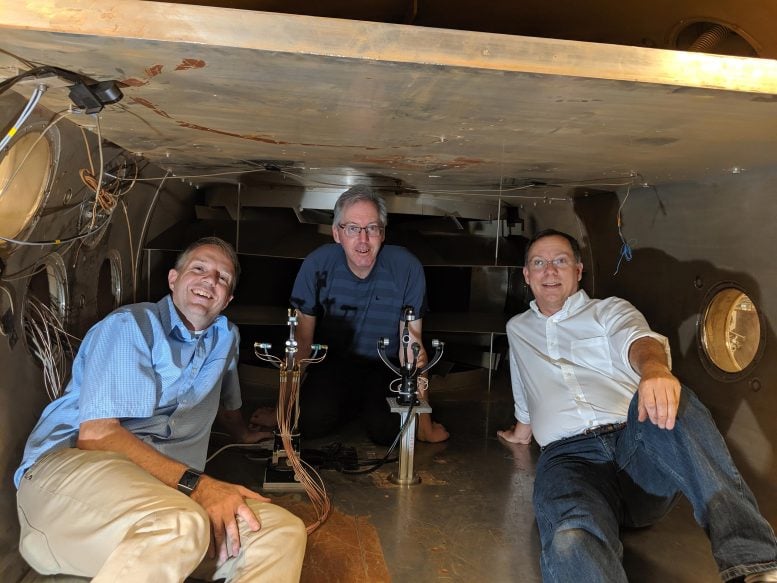
By American Institute of Physics August 16, 2024
Collected at: https://scitechdaily.com/how-sonic-technology-is-advancing-wind-detection-on-mars/
Mars’s hostile environment presents significant challenges for measuring wind speeds, but new advancements are making it possible to collect more accurate data.
Researchers have developed a novel sonic anemometric system using piezoelectric transducers, enabling faster and more precise measurements of Martian winds. This technology, which could measure up to 100 wind speeds per second, represents a significant improvement over previous methods. The potential to gather more detailed data could be crucial for future Mars missions, including the operation of small vehicles like the Ingenuity helicopter.
Challenges in Measuring Wind Speeds on Mars
Mars has a notoriously inhospitable environment, with temperatures that fluctuate dramatically over the course of a Martian day and average minus 80 degrees Fahrenheit. Its surface is mostly covered in red dust, with terrain typified by craters, canyons, and volcanoes. And its atmosphere is extremely thin, comprising only about 1% of the density of Earth’s.
Needless to say, measuring wind speeds on the red planet is challenging. Martian landers have been able capture measurements — some gauging the cooling rate of heated materials when winds blow over them, others using cameras to image “tell-tales” that blow in the wind. Both anemometric methods have yielded valuable insight into the planet’s climate and atmosphere.
But there’s still room for improvement in the astronomical toolshed, especially as plans to send astronauts to Mars unfold in the coming years.

Innovations in Wind Measurement Technology
In JASA, published on behalf of the Acoustical Society of America by AIP Publishing, researchers from Canada and the U.S. demonstrated a novel sonic anemometric system featuring a pair of narrowband piezoelectric transducers to measure the travel time of sound pulses through Martian air. The study accounted for variables including transducer diffraction effects and wind direction.
“By measuring sound travel time differences both forward and backward, we can accurately measure wind in three dimensions,” said author Robert White. “The two major advantages of this method are that it’s fast and it works well at low speeds.”
Implications for Future Mars Missions
The researchers hope to be able to measure up to 100 wind speeds per second and at speeds as low as 1 cm/s, a remarkable contrast to previous methods that could register only about 1 wind speed per second and struggled to track speeds below 50 cm/s.
“By measuring quickly and accurately, we hope to be able to measure not only mean winds, but also turbulence and fluctuating winds,” said White. “This is important for understanding atmospheric variables that could be problematic for small vehicles such as the Ingenuity helicopter that flew on Mars recently.”
Accuracy and Speed of the New System
The researchers characterized ultrasonic transducers and sensors over a wide range of temperatures and a narrow range of pressures in carbon dioxide, the primary atmospheric gas on Mars. With their selections, they showed only nominal error rates would result from temperature and pressure changes.
Looking Ahead to Future Mars Exploration
“The system we’re developing will be 10 times faster and 10 times more accurate than anything previously used,” said White. “We hope it will produce more valuable data as future missions to Mars are considered and provide useful information on the Martian climate, perhaps also with implications for better understanding the climate of our own planet.”
Reference: “Modeling and characterization of gas coupled ultrasonic transducers at low pressures and temperatures and implications for sonic anemometry on Mars” by Robert D. White, Rishabh Chaudhary, Zijia Zhao, Luisa Chiesa, Ian Neeson and Don Banfield, 13 August 2024, Journal of the Acoustical Society of America (JASA).
DOI: 10.1121/10.0028008

Leave a Reply